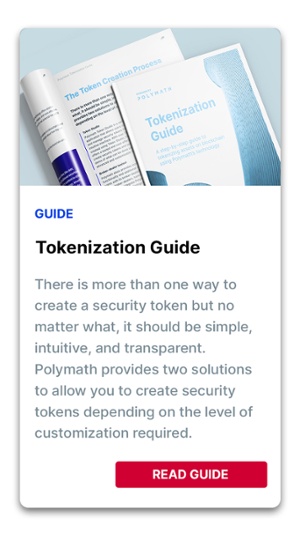You might have mapped an ecosystem, created a security token, and set compliance rules, but when it comes to completing the tokenization process, you’re not there yet! Issuers looking to transfer their token to investors will next need to complete the distribution process.
Once you’ve configured a security token, you’re ready for token distribution, which is the process of transferring tokens or funds to their intended recipients.
Let’s take a deeper look at the distribution process using Polymath technology as an example before exploring a few of its key features and the benefits they bring.
The Distribution Process
As distributions are essential for financial products and especially securities, they have found their way into the Polymesh design. Distributing assets on Polymesh involves two steps: minting your token and sending your token to investors.
 On Polymesh, tokens are minted by originators who also control its total supply. The minting process varies by jurisdiction when it comes to which entity is able to actually perform this action and where tokens need to be minted to. In some cases, the issuer is able to handle the minting process directly while in other cases, it might have to be a custodian, registrar, or transfer agent.
On Polymesh, tokens are minted by originators who also control its total supply. The minting process varies by jurisdiction when it comes to which entity is able to actually perform this action and where tokens need to be minted to. In some cases, the issuer is able to handle the minting process directly while in other cases, it might have to be a custodian, registrar, or transfer agent.
Minting can be completed in one easy click once the originator has entered the amount they wish to mint to the distribution agent. The minted token will then be distributed by the distribution agent, who can be the same individual or organisation. Newly minted tokens are held by distribution agents until they are actually distributed and the transfer process is complete.
When it comes to the distribution process, there needs to be some form of sale. Typically, this is referred to in the industry as primary issuance. In this process, it will be a pre-funded transaction, meaning the investors will send their funds ahead of time to the entity handling distribution (usually a broker-dealer). That entity will then hold the funds in escrow or trust with a custodian, or self-custody if they are able. Once the raised limits have been met, the broker-dealer will ensure the proper instructions are sent to the entity holding those assets for the investors and perform a delivery versus payment.
In the delivery versus payment process, the investors’ money is sent to the issuers’ bank or custodian, while the custodian or holder of the assets will send the assets to the investors. This ensures that nobody sends something without receiving something in return and thereby protects both issuers and investors.
While it might be similar to the process for traditional analog securities, distributing securities on the blockchain can offer a more streamlined approach, particularly as the blockchain provides a single source of truth which all parties can point to, reducing reconciliation time and speeding up the whole time to market.
With the right technology, distributing assets and managing future distribution events on the blockchain can be easy, while also helping investors increase access to the desired capital in a much shorter time and lower cost than what is typically offered.
What’s Involved for Issuers in Token Distribution
Polymath gives issuers an automated and reportable way to manage the initial token distribution as well as future distribution events. Here we highlight a few key features of Polymath’s technology and the benefits they offer to issuers when it comes to token distribution:
- Price: The automation and efficiency that blockchain technology brings to operations gives security tokens greater flexibility with price than paper-based securities. Polymath’s flexible interface lets issuers set pricing based on what they and their advisors feel makes the most sense of their business, such as by setting pricing tiers for their tokens or offering their tokens in fiat or crypto.
In addition, Polymath’s technology allows users to digitize an existing cap table or create a new security token offering with sophisticated pricing capabilities. When creating a new security token offering, users can simply mint and distribute their token with ease. - Mint: Token Studio allows issuers to smoothly deliver tokens to existing shareholders, affiliates, or reserve accounts while still enforcing broader compliance requirements as input by issuers. The issuer or their agent can provide a list of intended recipients, token allocations, and other details (ex. sell restrictions, KYC renewal dates). The application will then execute the instructions and transfer tokens to anyone who meets the previously entered compliance rules, while keeping a transparent record of where every token went.
- Control: Security token issuers need to be able to recall tokens, stop transfers, and see exactly who holds their asset at any given time. Unlike fully decentralized cryptocurrencies like Ethereum or Bitcoin, the Polymath solution gives issuers complete control and visibility over their security tokens.
- Collect: As issuers often don’t want to receive funds directly from their investors, Polymath lets them assign a qualified custodian to manage the collection in a safe and secure way.
With the right technology, distributing assets and managing future distribution events like dividend payments on the blockchain can be easy, while also helping investors increase access to the desired capital in a much shorter time and lower cost than what is typically offered.
Download our Tokenization Guide for further details on the steps involved in tokenizing an asset on the blockchain using Polymath’s technology.

